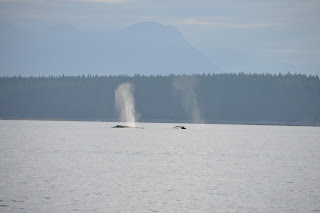Vancouver Island (and the surrounding small islands) is well known for rugged coastline and windswept vistas. While Pacific Rim National Park is world-famous for its sweeping sandy shores, not as many of the other sandy beaches are as well known. But in the summer, locals and tourists alike find them!
Long Beach, Pacific Rim National Park
Rathtrevor Beach, in Parksville, is perhaps the next most well-known sandy beach. This one stretches for miles, and at low tide there is more than enough room for everyone to explore and enjoy a piece of sand.
Further up the island in the Comox Valley are Miracle Beach and Saratoga Beach. Along that same stretch is Storries Beach. Miracle Beach and Storries beach offer the benefit of rocky sections of the shoreline that provide for hours of entertainment as well as expanses of sand at lower tides.
Miracle Beach
On the islands in the waters of Vancouver Island there are also many beautiful sand beaches. Tribune Bay on Hornby Island is perhaps one of the best known, while Smelt Bay on Cortes Island is a true gem.
Smelt Bay
Pacific Rim isn't the only place for sandy beaches on the west coast either. For the intrepid traveler willing to go further afield, Raft Cove and San Josef Bay offer beautiful open beaches with views across the open Pacific.
San Josef Bay
The south island also has its share of beaches, with Victoria and Sooke having numerous sandy shorelines to find (Willows beach, Esquimalt Lagoon, Witty's Lagoon, China beach, to name a handful).
So while we may all enjoy exploring our rugged coast, we also have the opportunity on a summer's day to bask on a sandy beach and soak up all that summer has to offer.
It's a Coastal Lifestyle ... Live It!



















